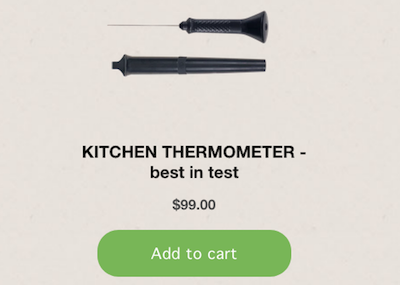
RIB-EYE, ENTRECOTE
Although entrecote counts as the front part of the animal it is tender and marbled and suitable for frying or grilling. A piece of entrecote with the ribs left is called Rib-eye (or Rib eye, the "eye" is the lump of fat in the middle of a fine cut) or Cote de boeuf. Also known as Scottish fillet.
Keep in mind
Select pieces with as much interspersed fat as possible. To hang tenderized entrecote produces the best result, but it takes time and makes the meat lose some weight. Therefore the price increases – but you are, on the other hand, paying less for water which is going to evaporate when you cook the meat. In this sense, you are getting more for your money. Meat tenderized in vacuum does not lose as much in weight – but nor does it reach the same level of taste.
How to cook entrecote
Because of the high content of fat in the meat, rib eye has to be handled a little differently from other high-end cuts of beef like Porterhouse and T-bone steak. Snobs will tell you that they like their beef rare or even "bleu", but this is not such a good idea with this particular cut. Undercooking means you will probably end up chewing chunks of luke warm and un-cooked fat.
Instead, aim for medium-rare or even medium. This will give the fat time to melt and to infuse all that tasty meat (rich in connective tissue which also needs some heating for a perfect result) with even more flavors.
An entrecote needs little added fat and is therefore perfect for the barbeque, whole or in slices. (But have your grill tongs ready. Drops of fat will cause fires and smoke from the charcoal.) Slices must not be too thin. You will get a juicier result if the thickness is about 2 cm or more (an inch).
Take the meat from the cold in advance. If meat is subjected to heat it will be "shocked" and contract into a ball, releasing moisture. If it is packed under vacuum, take it out and dry it off. A good idea is to keep it wrapped in a dry, clean side towl
Salt the meat – generously – about 45 minutes before cooking, giving the salt time to suck moisture out of the meat and to be reabsorbed again (not all cooks would agree that this is the best method/description, we suggest you experiment and find your own truth).
Coarse, newly ground pepper is the only spice you need. Soaking a tender, marbled rib eye in bbq sauce is a bit of a sin... If you are using a grill, be aware that burnt pepper has a sharp, disagreable taste. Add pepper after grilling.
Fry and grill entrecote on maximum heat. When you have the charred surface you desire, let the rest of the cooking of the meat take place in an oven at 150 degrees or in the indirect heat from the grill. Remember that the temperature continues to rise even after you have taken the meat from the heat source (about 4% of the heat in the oven, in other words 6 degrees if your oven heat is 150 degrees).
Let the meat rest for a minimum of 10 minutes so that the temperatures and juices can spread evenly inside the meat. Top it all with a dollop of butter if you wish to indulge. Serve in slices so that the guests can see the perfectly cooked, appetizing inside.
If you are frying the meat, whisk the frying pan with red wine to create a simple, tasty gravy.
The classic
Grill or fry at a high temperature, let it finish cooking in the oven, rest and serve with herbal butter, béarnaise or green pepper sauce.









